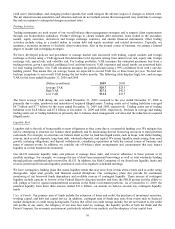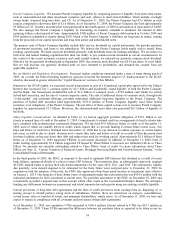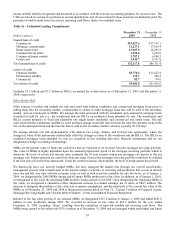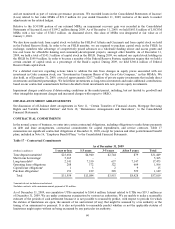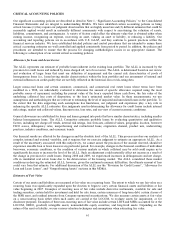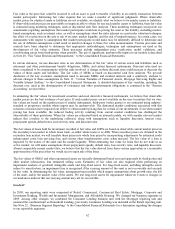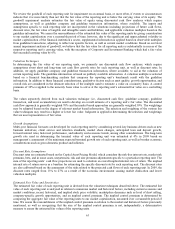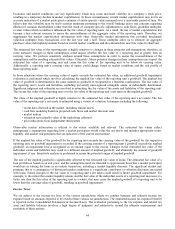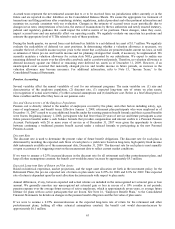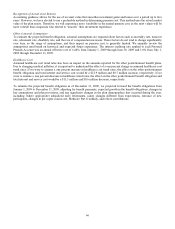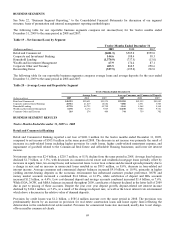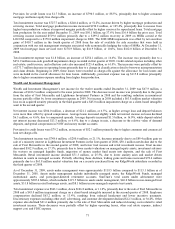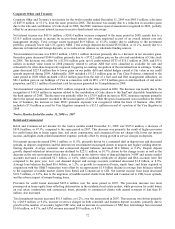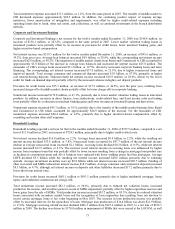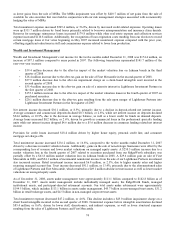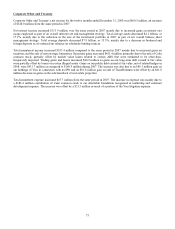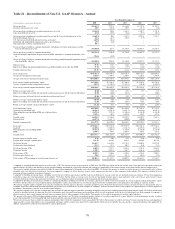SunTrust 2009 Annual Report Download - page 82
Download and view the complete annual report
Please find page 82 of the 2009 SunTrust annual report below. You can navigate through the pages in the report by either clicking on the pages listed below, or by using the keyword search tool below to find specific information within the annual report.Recognition of Actual Asset Returns
Accounting guidance allows for the use of an asset value that smoothes investment gains and losses over a period up to five
years. However, we have elected to use a preferable method in determining pension cost. This method uses the actual market
value of the plan assets. Therefore, we will experience more variability in the annual pension cost, as the asset values will be
more volatile than companies who elected to “smooth” their investment experience.
Other Actuarial Assumptions
To estimate the projected benefit obligation, actuarial assumptions are required about factors such as mortality rate, turnover
rate, retirement rate, disability rate, and the rate of compensation increases. These factors do not tend to change significantly
over time, so the range of assumptions, and their impact on pension cost, is generally limited. We annually review the
assumptions used based on historical and expected future experience. The interest crediting rate applied to each Personal
Pension Account was an annual effective rate of 6.64% from January 1, 2009 through June 30, 2009 and 3.0% from July 1,
2009 through December 31, 2009.
Healthcare Cost
Assumed healthcare cost trend rates also have an impact on the amounts reported for the other postretirement benefit plans.
Due to changing medical inflation, it is important to understand the effect of a one percent change in assumed healthcare cost
trend rates. If we were to assume a one percent increase in healthcare cost trend rates, the effect on the other postretirement
benefit obligation and total interest and service cost would be a $12.9 million and $0.7 million increase, respectively. If we
were to assume a one percent decrease in healthcare trend rates, the effect on the other postretirement benefit obligation and
total interest and service cost would be a $11.3 million and $0.6 million decrease, respectively.
To estimate the projected benefit obligation as of December 31, 2009, we projected forward the benefit obligations from
January 1, 2009 to December 31, 2009, adjusting for benefit payments, expected growth in the benefit obligations, changes in
key assumptions and plan provisions, and any significant changes in the plan demographics that occurred during the year,
including (where appropriate) subsidized early retirements, salary changes different from expectations, entrance of new
participants, changes in per capita claims cost, Medicare Part D subsidy, and retiree contributions.
66


